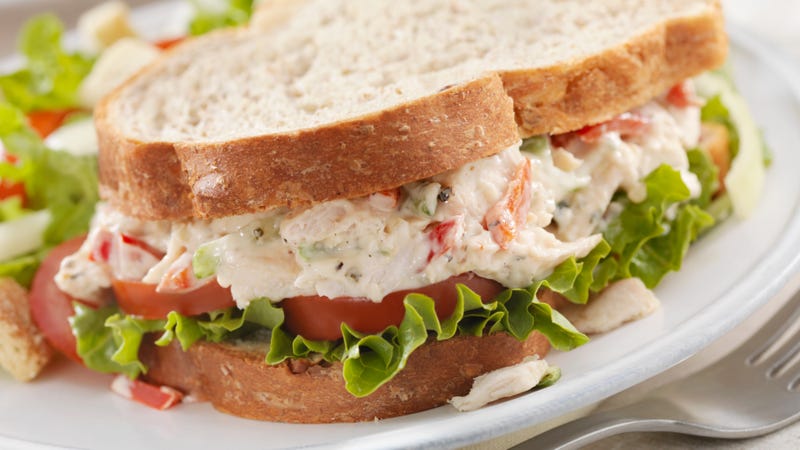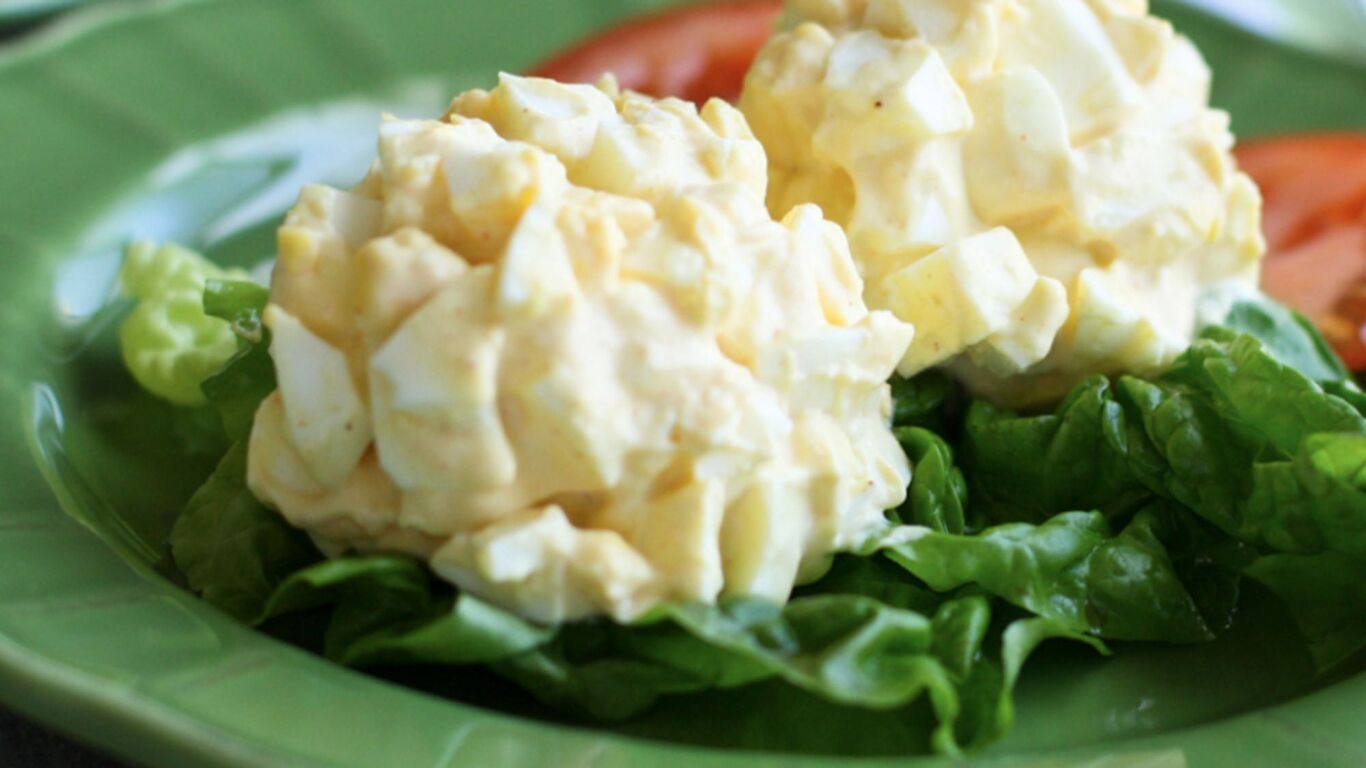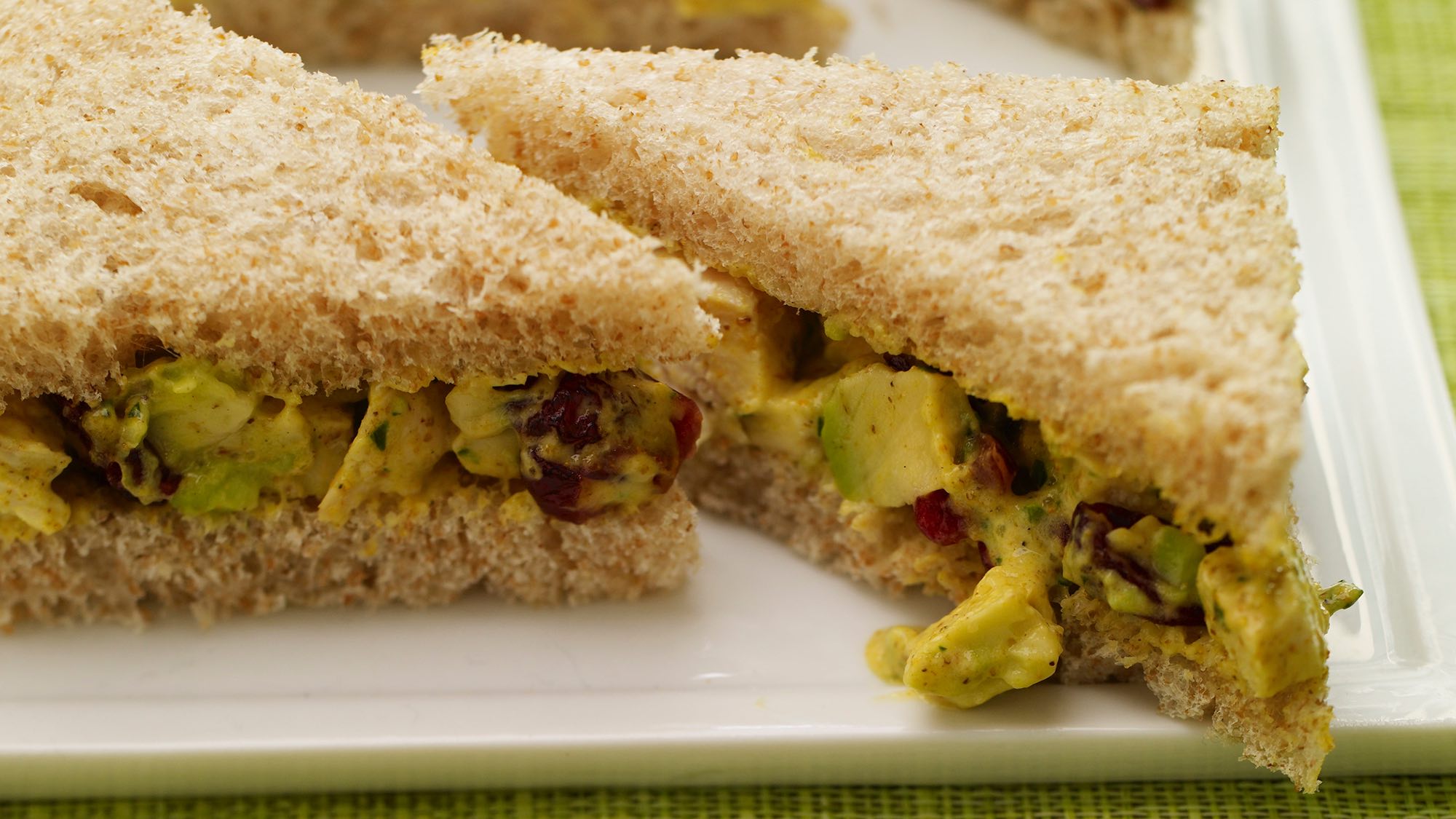Chicken, tuna, and egg salad sandwiches can inspire two wildly different sets of emotions. They’re either deliciously restorative and nostalgic, or sad, boring, and reminiscent of bleak desk lunches (similar to fluorescent lighting). The key components never change—it’s the details that make these sandwiches great.
Tweak the base
Poached chicken is the traditional salad chicken, but grilled chicken has more flavor, and leftover fried chicken will blow your damn mind. The heavily seasoned breading gets all mixed in with the mayo, creating a bread crumb-like situation throughout your sandwich, adding texture and taste.
Eggs also take very well to tweaking. Wrapping hard-boiled eggs in miso for a few hours infuses them with salty-sweet goodness, or you could pressure cook ‘em for toasty, nutty whites. I also like upping the fat-to-protein ratio with a few extra yolks, because that’s where the flavor is. (Anyone who claims to love the taste of un-doctered egg whites is a lying liar who lies.)
As for tuna, I like pretty much any white albacore packed in water.

Photo:
Use very good mayonnaise
I actually don’t know of many “bad” mayos, but I do have my favorites. If you live in an area that is graced by the presence Duke’s, get you some of that, but Hellman’s (or Best Foods, depending on your region) is a very good everyday mayonnaise. If you’re making a tuna-based salad, try the Japanese Kewpie, which is sweeter and creamier than American mayos. Trader Joe’s has a wasabi mayo, which is fun for tuna, but you can get the same effect by adding wasabi or prepared horseradish to any mayonnaise.)
Then there is the DIY route, which allows one to switch out the oil and add all sorts of fun flavors. I wouldn’t use cheese mayo, duck fat mayo, or bacon mayo on tuna—it would overwhelm the fish—but all three would work very well with chicken, and bacon mayo is obviously made for egg salad. (For a basic homemade mayonnaise, I like the Serious Eats immersion blender recipe.) Oh, and if you don’t like mayo for some reason, try tahini, or your favorite salad dressing (Caesar kicks butt).
Don’t forget acid
Fat is flavor, but too much fat can mute the tastes of your other salad components. Acidic ingredients add flavor while balancing richness, giving your salad sandwich a bit more dimension. Mustard is your friend here. I like plain yellow to give my egg salad deviled vibes, dijon for chicken, and wasabi or hot Chinese mustard for tuna. A little pickling brine is also a good way to add a little zip, as is a splash of sherry, champagne, or rice vinegar.
Photo: McCormick
But definitely forget celery
Celery is a useless vegetable that adds nothing but a bit of texture and tastes mildly of acetone. Instead of ruining your salad sandwich with celery, try diced apple, crunchy fennel, literally any kind of onion, or chopped water chestnuts. Also, have you met pickled vegetables? Have you tried a pickled apple in chicken salad? Ever considered what sweet and tangy pickled corn could bring to the table? Holy heck, friends. If nothing else, try a chopped cornichon before you reach for the watery, stringy mess that is a celery stalk. TJ’s has some extremely good ones for cheap. If you absolutely must have crunch without flavor, try some shredded iceberg. (If you want flavor without more crunch, add capers.)
Season it
Even if the components of your salad sandwich are seasoned, that doesn’t excuse you from seasoning the dish as a whole. Your pepper should be freshly ground, and your salt should be flaky (for taste and texture). Also, take this opportunity to raid your spice cabinet. Curry powder is an exceptional addition to a chicken salad, furikake is great on tuna, and nutmeg can add surprising depth to egg. If you have everything bagel seasoning, try it on all three. Same goes for a pinch of MSG. (If you don’t have pure MSG, a little bit of chicken-flavored ramen powder works amazing well in chicken salad—a little raccoon tip from me to you.)
As for bread, keep it simple. White sandwich bread is one thing that doesn’t need an upgrade here. (Though I guess a case could be made for a croissant.)
This article was written by Claire Lower on Skillet and shared by Claire Lower to Lifehacker from Lifehacker and was legally licensed through the NewsCred publisher network. Please direct all licensing questions to legal@newscred.com.






